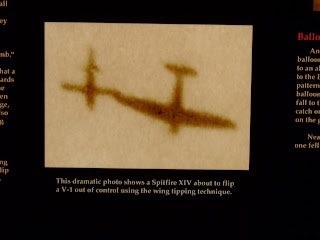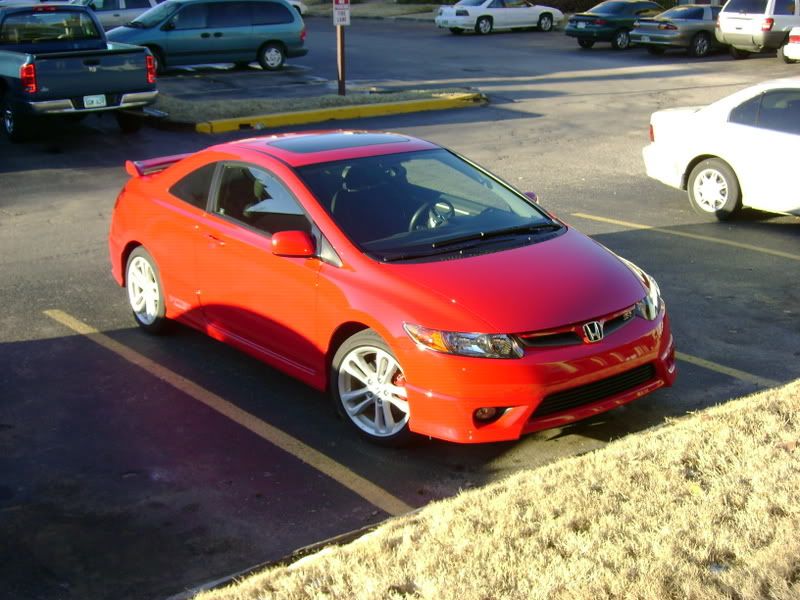Feb 20, 2007
Field Trip!

So out of the wild blue Randy and I decided to take a trip down to the Kansas Cosmosphere today. it's in Hutchinson, Kansas, which is about 20 minutes away from us.
The first thing that we saw as we approached the mueseum is an old Mercury-Redstone rocket. Sweet! I wrote a report about these things way back when. (All of the pictures are clickable. Wanna see a larger version? Click.)
The Mercury Rocket was the first rocket to carry an american into space sucessfully. It used the Redstone engine (originally designed for military ICBMs). Eisenhower wanted to use some civilian rocket engine, but that failed. Using already existing military-grade technology is tried-and-true. I don't know what Ike's deal was.

Next up is the truly awe-inspiring SR-71 Blackbird Spyplane. Big, sleek, fast- a miracle of engineering that came out of t
 he 60's.
he 60's.This plane was actually built with gaps in the airframe- the designers knew that when it reached the speeds it was capable of, it would heat the skin of the airplane to tremendous temperatures. Upon heating up the airframe would expand and seal itself shut (Sitting on the runway at normal temperatures, this plane would actually leak fuel because of the gaps).
The engineers soon found that the more times the plane flew, the more aerodynamic it was becoming due to the heat and wind changing the

shape of the plane a tiny amount.
The SR-71 made a great spy plane, but a horrible stealth plane. The engine's jets (literally the fire expelled by the jet engines) were so long that they actually had
 their own radar signature.
their own radar signature.Also, The engines became MORE fuel efficient the faster the plane went. Wikipedia has quite an interesting site on the SR-71.
In order to get a feel for how... amazing this plane is, you'd probably have to see it yourself.


Next up are just some other things to see. I'll post pictures, but I probably won't have much to say. the pictures might have a caption, however. make sure to put your cursor over them for additional information.

These couple regard german weapons of war. the V-1 and V-2 rockets were the FIRST rocket propelled bombs (rather, missles). They appeared a little too late in WWII to make any significant difference, however...







Next up we have the Liberty Bell 7- the Command Capsule that was loaded onto Mercury #4, Spacecraft 11. Second manned flight into space (July 21, 1961). The flight of the Liberty Bell 7 went without event, but upon landing in the ocean, the explosive hatch mysteriously blew off. Although recovery teams attempted to rescue the module from the sea, they were unable- until July 20, 1999.
The capsule was shipped to the Kansas Cosmosphere, where it was dissasembled, cleaned, and
 put back together.
put back together.Amazingly enough, restorers found 52 mercury dimes and 5 silver certificates while taking the spacecraft apart. I'm a coin collector- but DAMN! Space, then the bottom of the ocean for 38 years- what I would do to get my hands on something like that! I took a snapshot of the silver certificate. The brown coloration is probably a rust stain- I assume that this note was against a piece of metal that oxidized in the salt water. What is REALLY amazing about this note is the fact that it is a star note. If you examine the serial number, You'll see that it starts with a star. Star notes are only printed when an error occurs in the printing process. Say the ink runs badly, or the "paper" tears. The damaged note is destroyed, and a star note is printed in its place. Because of this Star notes aren't terribly common. I see them at work sometimes, but DAMN! I've got a birthday coming up, err.... Moving on?

This... Well, this is a Saturn Rocket (The rocket that carried all of the Apollo Missions) being transported by a ...crawler. Each shoe (the treads are composed of hundreds of shoes) weighed about a ton. Ridiculous. This thing is huge! Just imagine being the driver of something like this.

Comments:
Post a Comment


